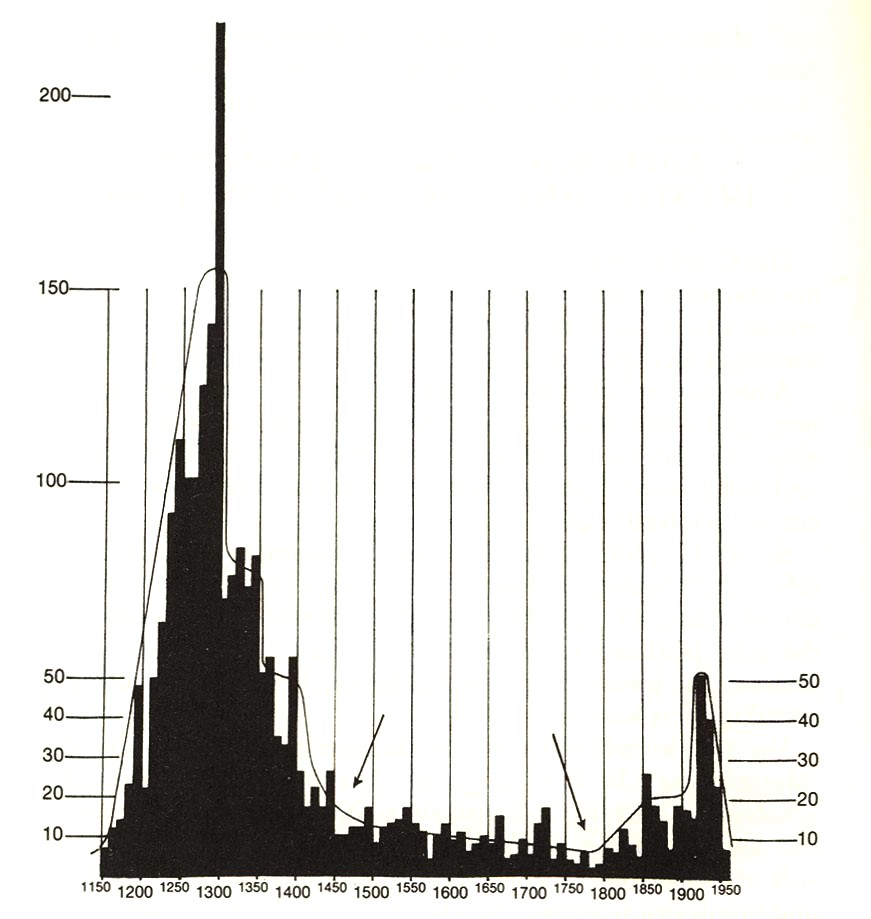The chart below gives an idea of the changing rate at which new cities and towns that were founded in central Europe, decade by decade, in the eight hundred years between 1150 and 1950. It encompasses about 2,000 foundations, which represents about half the total number of new settlements established during that period. The greatest wave of foundations began in the mid-twelfth century. Initially, the majority of these new towns owed their existence to long-distance commerce with older settlements and were established with commercial needs and interests in mind. After 1250 or so, most new towns served a different function, to produce and consume for local and regional markets. These were, for the most part, towns of smaller size; but they were also far greater in number. From 1300 on, finally, most new towns were so-called "agrarian towns" (in German Ackerbürgerstädte) whose economies were organized exclusively around local, agricultural needs and whose urban liberties were few. Central Europe's landscape of small- and medium-sized towns is a direct outgrowth of this three-staged process.
